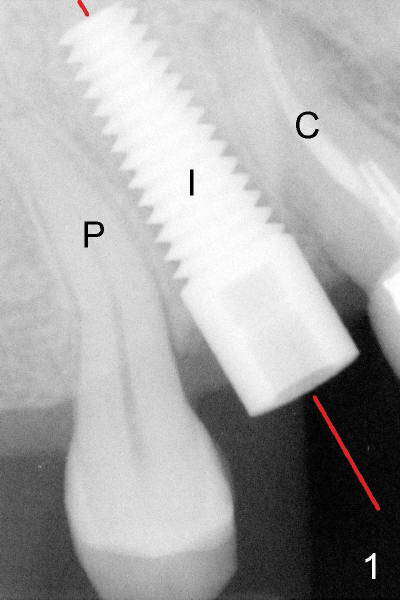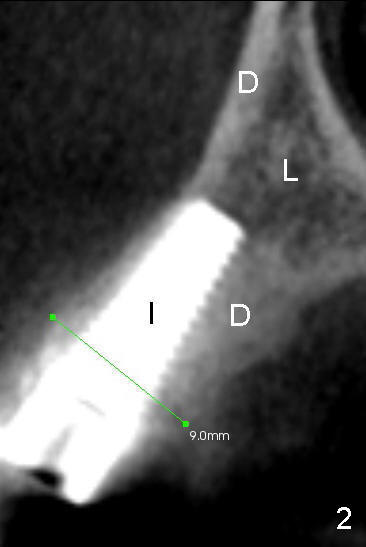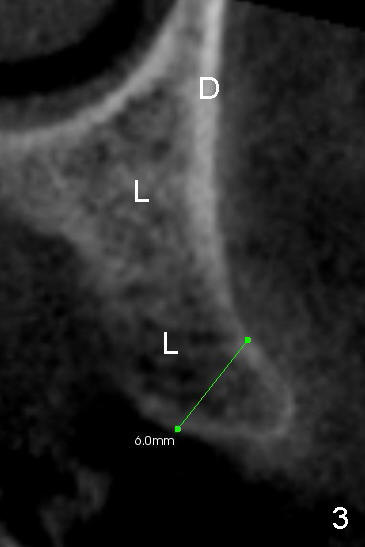



 |
 |
 |
 |
||
Bone Compression for Implant
An implant of diameter 5 mm (Fig.1 I) is placed between an upper canine (C) and the 2nd premolar (P) using bone expansion technique. A hole is made using a series of chisels to let the implant squeeze in. The advantage of expanding the bone is basically no bone being removed. Let us make a section through the implant (red line).
The cross section in Fig.2 (CT scan taken on the day of surgery) shows that the width of bone holding the implant is 9 mm. The width of the bone before expansion is 6 mm, the same as shown in Fig.3. Fig.3 is the cross section of the other side (missing 2nd premolar). It appears that the bone is not expanded as much as expected (5+6=11 vs. 9 mm). In fact, the bone density next to the implant is increased (D (dense) in Fig.2, as compared to L (loose) in Fig.3 at the same level). So bone expansion is accompanied with bone compression and condensation. There is dense (hard) bone immediately around the implant using bone expansion. It makes the implant very sturdy in the bone.
Diagrams are used to explain bone expansion and compression (Fig.4-10). Our bone looks like a sandwich. The outer layer of the bone (bread) is dense (D, dark blue), whereas the inner portion (ham/cheese) is loose (L, light blue) (Fig.3,4). The traditional way to place an implant (Fig.5 I) is to drill a hole into the bone before placement. All of loose bone and part of dense bone may be removed. Some of remaining dense bone may be gone during bone healing (Fig.6 >). The implant may be not stable. In contrast, basically no bone is removed when bone expansion technique is being used. The bone immediately becomes denser (from light to dark blue) when a thin pointed chisel (Fig.7 E: expanding instrument) is driven into the bone. Later a thick blunt rounded chisel is pushed in; the bone immediately next to it may be compressed/condensed accordingly (Fig.8). Finally the condensed bone fuses to the outside originally dense bone (Fig.9 >) when an implant (I) is squeezed in. The bone is also expanded. In one word, the bone is stretchable and compressible. There is a thick layer of dense bone all around the implant. The latter must be very stable. The bone is also expanded. Several months later, the expanded/compressed bone heals nicely with surrounding bone (Fig.10*). The implant is ready to work.
Xin Wei, DDS, PhD, MS 1st edition 10/11/2012, last revision 01/23/2016